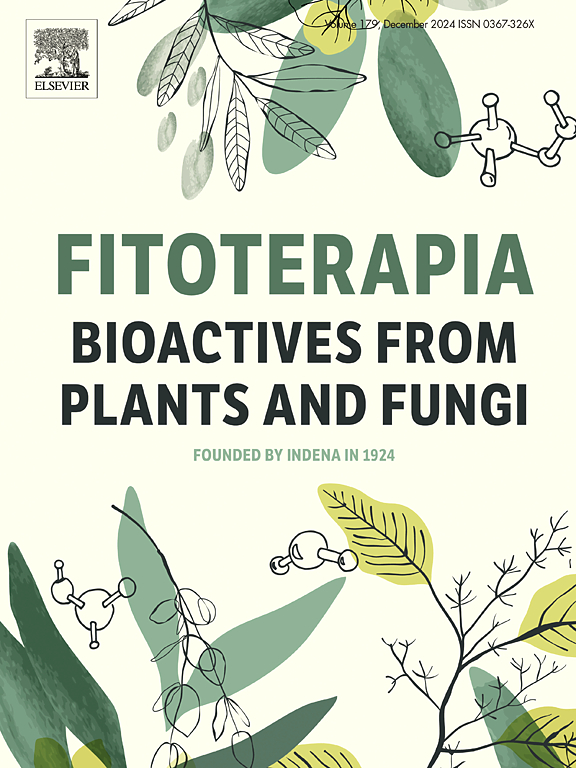Combining transcriptomics and network pharmacology to reveal the mechanisms of QuZhuoHuaYu decoction ameliorating gouty arthritis
IF 2.6
3区 医学
Q3 CHEMISTRY, MEDICINAL
引用次数: 0
Abstract
QuZhuoHuaYu decoction (QZHY), a traditional Chinese medicine, has demonstrated a potential effect in gouty arthritis (GA) treatment, but its underlying mechanisms have yet to be fully elucidated. In this study, a strategy of UHPLC-Q-Orbitrap-MS/MS, transcriptomics, and network pharmacology combined with experimental verification was conducted to explore the constituents and the potential mechanisms of QZHY. A total of 26 compounds were identified from QZHY. Furthermore, QZHY significantly reduced the swelling index and inflammatory cell infiltration, and restrained macrophage M1 polarization and NLRP3/IL-1β pathway in ankle joints of GA mice. According to network pharmacology and transcriptomic analysis, it found NF-κB, HIF-1, and neutrophil extracellular trap (NET) formation pathways are the potential pathways for QZHY against GA. Experimental verification revealed that QZHY treatment inhibited NF-κB, HIF-1, and NET formation pathways in GA mice. In conclusion, QZHY ameliorates inflammation in GA mice, which may be associated with the inhibition of NLRP3, NF-κB, HIF-1, and NET formation pathways. It highlights a multi-target pharmacological mechanism of QZHY and provides a scientific basis for further study of QZHY on GA treatment.

结合转录组学和网络药理学研究祛燥化瘀汤改善痛风性关节炎的作用机制
中药祛燥化瘀汤(QZHY)已被证实对痛风性关节炎(GA)有潜在的治疗作用,但其潜在的机制尚未完全阐明。本研究采用UHPLC-Q-Orbitrap-MS/MS、转录组学和网络药理学相结合的方法,结合实验验证,探讨芪脂素的成分及其作用机制。共鉴定出26个化合物。此外,芪脂素可显著降低GA小鼠踝关节肿胀指数和炎症细胞浸润,抑制巨噬细胞M1极化和NLRP3/IL-1β通路。通过网络药理学和转录组学分析发现,NF-κB、HIF-1和中性粒细胞胞外陷阱(NET)的形成途径是QZHY抗GA的潜在途径。实验验证表明,清热益能抑制GA小鼠NF-κB、HIF-1和NET的形成途径。综上所述,清热益能改善GA小鼠的炎症,这可能与抑制NLRP3、NF-κB、HIF-1和NET形成途径有关。本研究突出了芪直益的多靶点药理机制,为进一步研究芪直益治疗GA提供了科学依据。
本文章由计算机程序翻译,如有差异,请以英文原文为准。
求助全文
约1分钟内获得全文
求助全文
来源期刊

Fitoterapia
医学-药学
CiteScore
5.80
自引率
2.90%
发文量
198
审稿时长
1.5 months
期刊介绍:
Fitoterapia is a Journal dedicated to medicinal plants and to bioactive natural products of plant origin. It publishes original contributions in seven major areas:
1. Characterization of active ingredients of medicinal plants
2. Development of standardization method for bioactive plant extracts and natural products
3. Identification of bioactivity in plant extracts
4. Identification of targets and mechanism of activity of plant extracts
5. Production and genomic characterization of medicinal plants biomass
6. Chemistry and biochemistry of bioactive natural products of plant origin
7. Critical reviews of the historical, clinical and legal status of medicinal plants, and accounts on topical issues.
 求助内容:
求助内容: 应助结果提醒方式:
应助结果提醒方式:


